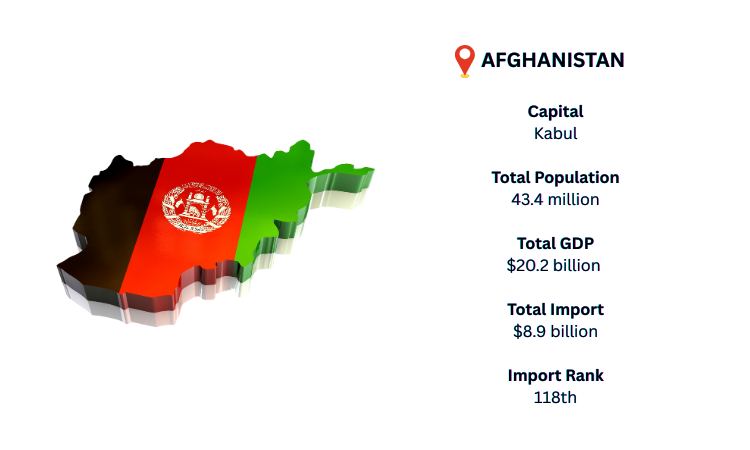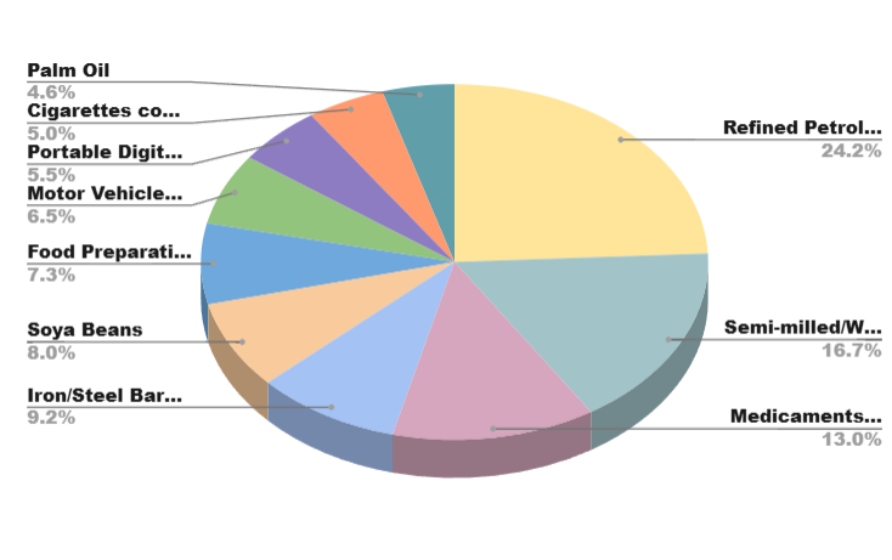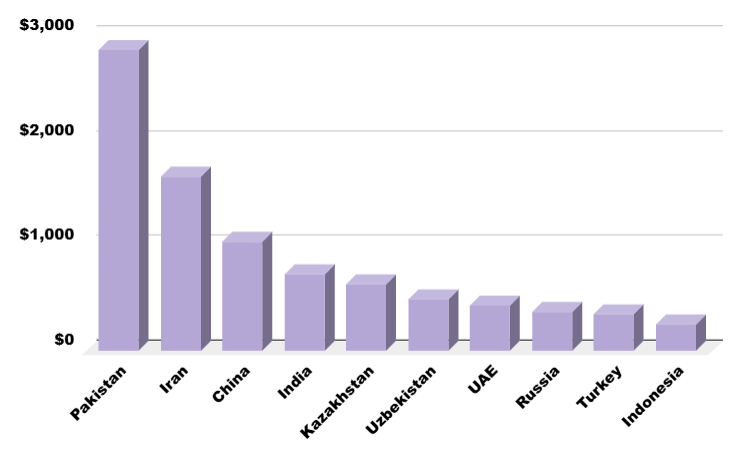Afghanistan is a landlocked nation in South-Central Asia that shares borders with China, Iran, Pakistan, Turkmenistan, Uzbekistan, and Tajikistan. Kabul is its largest city and capital. Afghanistan's GDP is projected to be at USD 20.2 billion in 2024. Afghanistan is the 118th-largest importer in the world, according to global import data. Pakistan is the largest exporter to Afghanistan, per the most recent data. An estimated USD 8.9 billion would be imported into Afghanistan in 2024. As per Afghanistan import data, refined petroleum is the most imported product out of the vast array of commodities that are imported.
Afghanistan still depends significantly on foreign commerce to cover its internal requirements despite persistent political and economic difficulties. The nation is an important transit center for regional commerce because of its advantageous location at the meeting point of Central and South Asia. According to Afghanistan Customs Data, it has strengthened its import network and broadened its global sourcing base thanks to recent increases in trade agreements and transportation infrastructure development.



